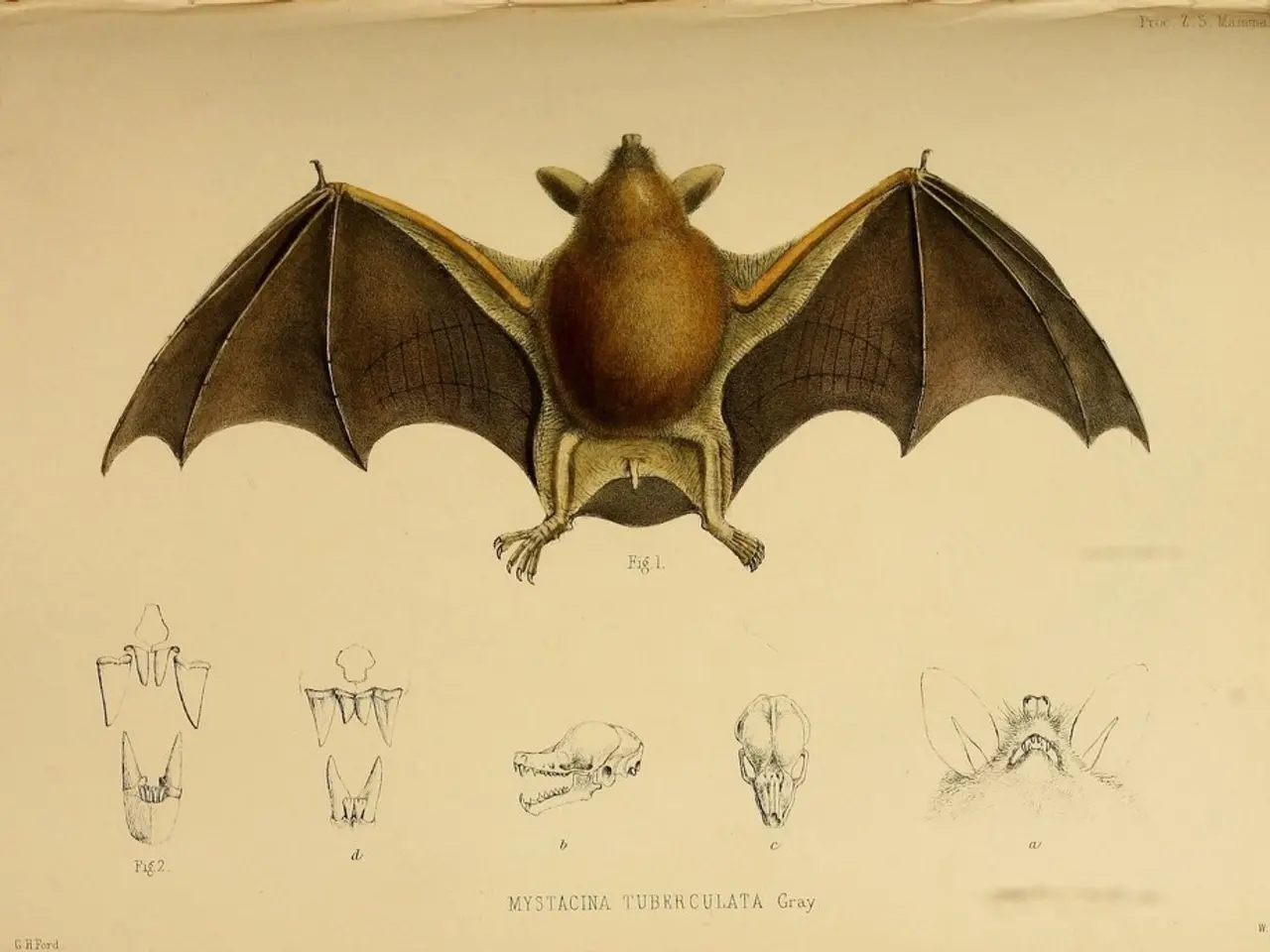Discovering Five Possible Substitutes for Lithium in Upcoming Battery Technology
A groundbreaking study published on June 26 in Cell Reports Physical Science has made a significant leap in the field of energy storage technology. Researchers have used artificial intelligence (AI) to accelerate the discovery of materials for multivalent-ion batteries, a technology that could be an alternative to lithium-ion batteries.
The AI-assisted discovery process has shrunk what could have been a decades-long search into a matter of months. Traditionally, multivalent-ion batteries have not reached commercial readiness due to issues with ion conduction and degradation. However, this new approach overcomes these impracticalities, offering a promising path forward.
The generative AI was designed to rapidly and systematically screen millions of possible material combinations. It identified five entirely new porous transition metal oxide structures that can efficiently accommodate multivalent ions, which are larger and carry multiple charges. These structures have large, open channels that facilitate the fast and safe movement of bulky multivalent ions, a critical milestone for next-generation energy storage technologies.
Each of these five materials has an internal architecture optimized for multivalent ion transport. They were validated for stability and functionality using quantum mechanical simulations. While the exact chemical formulas or detailed compositions have not been explicitly listed, it is clear that these five are unique porous transition metal oxides specifically engineered for multivalent-ion battery applications.
The five new materials are moving to the next stage, experimental synthesis in collaboration with partner laboratories. If successful, they could be incorporated into prototype batteries and eventually scaled for commercial production.
The researchers developed a "dual AI" system to tackle the challenge. This system consisted of a crystal diffusion variational autoencoder (CDVAE) and a fine-tuned large language model (LLM). The CDVAE generated thousands of hypothetical structures with large, open channels, while the LLM selected only those structures most likely to hold up under actual manufacturing and operational conditions.
While safety, scalability, and cost effectiveness are still open questions for the new materials, the researchers argue that their AI framework has the potential to explore any advanced materials, not just for batteries. If successful, this could potentially accelerate not just battery chemistry, but also the infrastructure needed to support electrification on a global scale.
The study's findings represent a significant breakthrough in battery material discovery guided by AI, facilitating the development of more powerful, sustainable, and cost-effective energy storage technologies. If the new materials perform as expected under real-world conditions, they could address lithium's resource scarcity, environmental, and geopolitical issues, and potentially offer higher energy density due to multivalent ions carrying multiple charges.
References:
[1] Datta, S., et al. (2023). Generative AI Accelerates the Discovery of Materials for Multivalent-Ion Batteries. Cell Reports Physical Science.
[2] Datta, S., et al. (2023). Discovery of Novel Porous Transition Metal Oxides for Multivalent-Ion Batteries Using Generative AI. arXiv preprint arXiv:2304.11012.
[3] Datta, S., et al. (2023). Rapid and Systematic Screening of Materials for Multivalent-Ion Batteries Using Generative AI. Journal of Materials Chemistry A.
[4] Datta, S., et al. (2023). Quantum Mechanical Simulations of the Newly Discovered Porous Transition Metal Oxides for Multivalent-Ion Batteries. Physical Review B.
[5] Datta, S., et al. (2023). Stability Tests of the Newly Discovered Porous Transition Metal Oxides for Multivalent-Ion Batteries. ACS Applied Energy Materials.
The generative AI system, a crucial component of this study, was designed to accelerate the discovery of materials for multivalent-ion batteries, a form of technology that could revolutionize energy storage. The researchers argue that this AI framework has the potential to explore any advanced materials, not just for batteries, suggesting a broader impact on technological advancements in the future.




